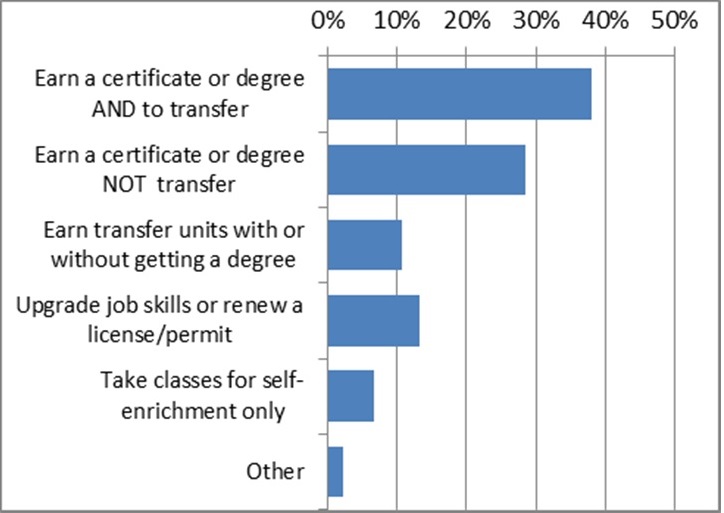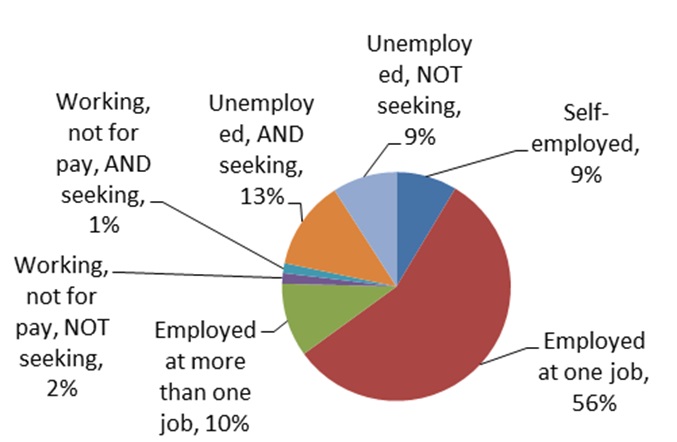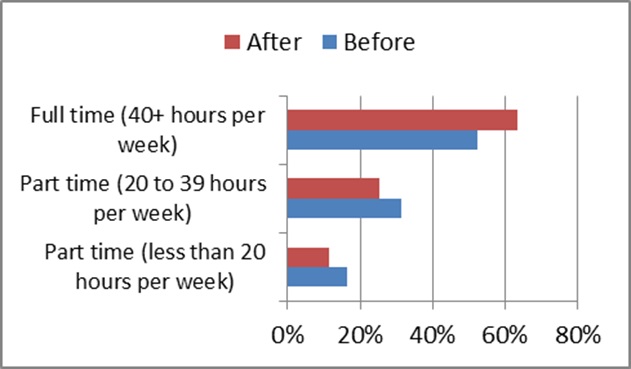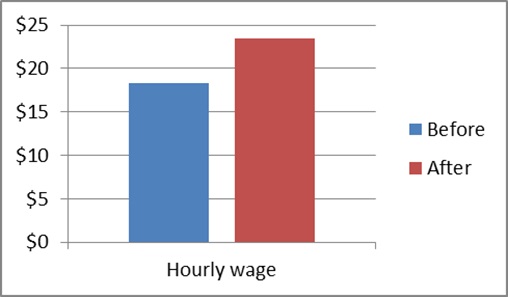ReSults
- Respondents were asked their primary reason for studying at California Community Colleges, and the majority (67%) indicated earning a certificate or degree (with or without transfer). Figure 1 below shows the results.

Figure 1. Primary reason for studying
- Respondents were asked why they stopped taking classes at California Community Colleges. Here are the most frequently cited reasons, in rank order of frequency:
- I completed the program (4,400)
- My goals were met (4,205)
- I transferred to another school (2,622)
- I got a job (1,867)
- I didn’t have enough time for classes (1,117)
- Classes I needed were not available (1,081)
- Family or personal reasons (948)
- 56% of former students were “very satisfied” with the education and training they received and 35% were “satisfied” for an overall satisfaction rate of 92%.
- 35% of respondents indicated they had transferred to a 4-year institution to pursue a Bachelor’s Degree.
- 75% of respondents are employed for pay. Figure 2 below shows the results.

Figure 2. Current Employment Status
- Overall, statewide, students who transferred have twice the likelihood of being unemployed and not seeking employment, likely because they are enrolled at a four year institution.
- Respondents were asked, if currently employed, how closely related their job is to their field of study at California Community Colleges. Nearly half (48%) indicated they are working in the same field as their studies and training, followed by more than a fifth (22%) indicating they work in a field that is “close” to their studies and training, and 30% indicated their job is not related to their studies.
- Of those respondents who engaged in a job search after finishing their studies, 32% reported finding a job and 11% were still looking (the remaining respondents were not looking or were already employed). Of those with a successful job search, 78% found a job within six months (61% within three months).
- 3,963 respondents (8%) indicated they obtained an industry certification or licensure and 754 (2%) indicated they obtained journey-level status in the same field of study after finishing their coursework.
- Before their studies, 52% of respondents worked full time. After completing their studies, 64% work full time. Figure 3 below shows the results.

Figure 3. Work status before studies/training and after
- The hourly wage of all respondents increased 28% from their hourly wage before their studies ($18.34) to their hourly wage after completing their studies ($23.51).

Figure 4. Earnings before studies/training and after
- Respondents were asked what impact their coursework had on their employment. Here are the reasons, listed in rank order of frequency:
- Prepared me for a possible new job (251)
- Enabled me to learn skills that allowed me to get a job at a new organization (240
- No impact on my employment (186)
- Enabled me to learn skills that allowed me to stay in my current job (115)
- Enabled me to learn skills that allowed me to get a promotion at my same organization (63)
- Enabled me to start my own business (58)
Summary and Conclusions
The results of the survey showed that completing CTE studies and training – whether or not a credential is earned, whether or not a student transfers – is related to positive employment outcomes. The preponderance of respondents are employed, are working in the same field as their studies or training, and are working full time. Respondents overall posted a 28% increase in their hourly wage after completing their studies at California Community Colleges and the vast majority were satisfied with the education and training they received.
Please click here to download the PDF version of the Statewide Report